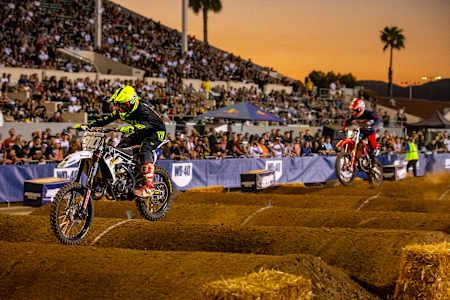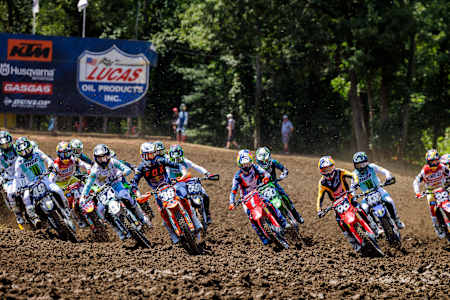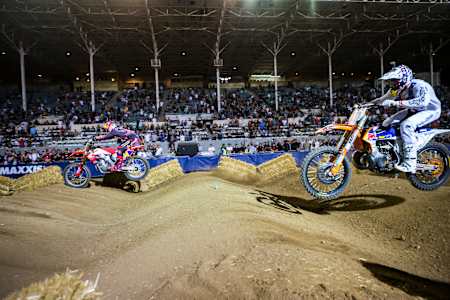
Motocross
Different strokes for different folks: The 2-stroke vs 4-stroke debate
Over the last few years, there’s been a resurgence in the popularity of two-strokes engines, even though competitive riders continue to rely on four-stroke power. So which is preferable?
The sounds. The smells. The feels that electrify the senses and carry you back to simpler times. For many motorcycle enthusiasts, working and riding on two-stroke bikes capture the essence of a bygone era.
But developing a need for speed can be cyclical. Early in the history of motorcycling, everything was four-stroke. Four-stroke engines crashed the party in the late '90s, rose to prominence in the mid-2000s and have remained in professional motocross ever since.
Over the last few years, there’s been a resurgence in the popularity of two-stroke engines, even though competitive riders continue to rely on four-stroke power. So which is preferable?
Combustion motorcycle engines are available in either two or four strokes. Strokes refer to the number of times the piston travels through the cylinder to complete a power cycle during one revolution of the crankshaft during the combustion process.
The cylinders in a two-stroke engine rise up for intake and stroke down for exhaust. A two-stroke engine is fueled by a mixture of gas and oil and has no camshaft or valves. It fires every time the piston reaches the top. A four-stroke engine uses four separate strokes—two up and down for intake and two up and down for exhausts—and fires every other time it reaches the top.
During the halcyon days of motorcycles, two-stroke engines were notably lighter and offered consistent power. The level of acceleration out of the gate was mind-blowing. With fewer parts and pieces, the two-strokes were cheaper and easier to maintain. Even with today’s modern engines, an equivalent displacement two-stroke produces a lot more power than its counterpart in a less complicated package.
The game changed in 1997 when Yamaha introduced the YZM400, a four-stroke designed to compete in the AMA Supercross series. The challenge was to create a legal bike that was light enough, yet produced uniform power delivery and adequate torque. Over the next decade, more manufacturers jumped on board, and the four-stroke bikes evolved. Not only had the four-stroke gained power and reliability, but they also became lighter and easier to ride. Fuel injection was an added bonus to the package, along with lower emissions.
For two-stroke devotees, the only thing better than the roar of the engine and sweet smell of pre-mix race fuel is attempting to contain the power beneath the seat of a vintage bike. There’s no denying the fun factor.
At 28, Ken Roczen had never competed on a two-stroke motorcycle until he won Red Bull Straight Rhythm in 2019. Although he quickly acclimated to the nuances of the bike, the three-time AMA champ admits it’s a different animal.
“We don’t spend any time any more on two-strokes at all,” Roczen said. “There are certain brands that have newer bikes as well but even for that, we just don’t ride them enough. There’s a big difference in power delivery compared to a four-stroke. A four-stroke has a very consistent power band, has a lot of reserve power," he added.
“Obviously, with two-strokes they’re very, very different. They’re kind of like a light switch—a little flat on the bottom, then they pick up and they flatten out on the top. And the whole power band is a lot different, not to mention that they’re two-stroke and carburetor bikes. You just have to treat this whole thing with a lot of respect, try to stay healthy, that’s for sure.”
Modern-day drivers who compete with four-stroke motorcycles nevertheless maintain a profound respect for the two-stroke idols who preceded them. In the 2019 Red Bull Straight Rhythm 125-class competition, for example, one of the memorable races featured AJ Catanzaro sporting the period-perfect setup of his foremost hero, James "Bubba" Stewart, while his opponent, Luke Renzland, rode a throwback bike honoring legendary rider Jeremy McGrath.
Catanzaro won that particular semifinal matchup but fell to Carson Brown in the final. Nevertheless, the reverence for motocross’s glory days was duly noted and will continue on Oct. 15 at Huntington Beach.







